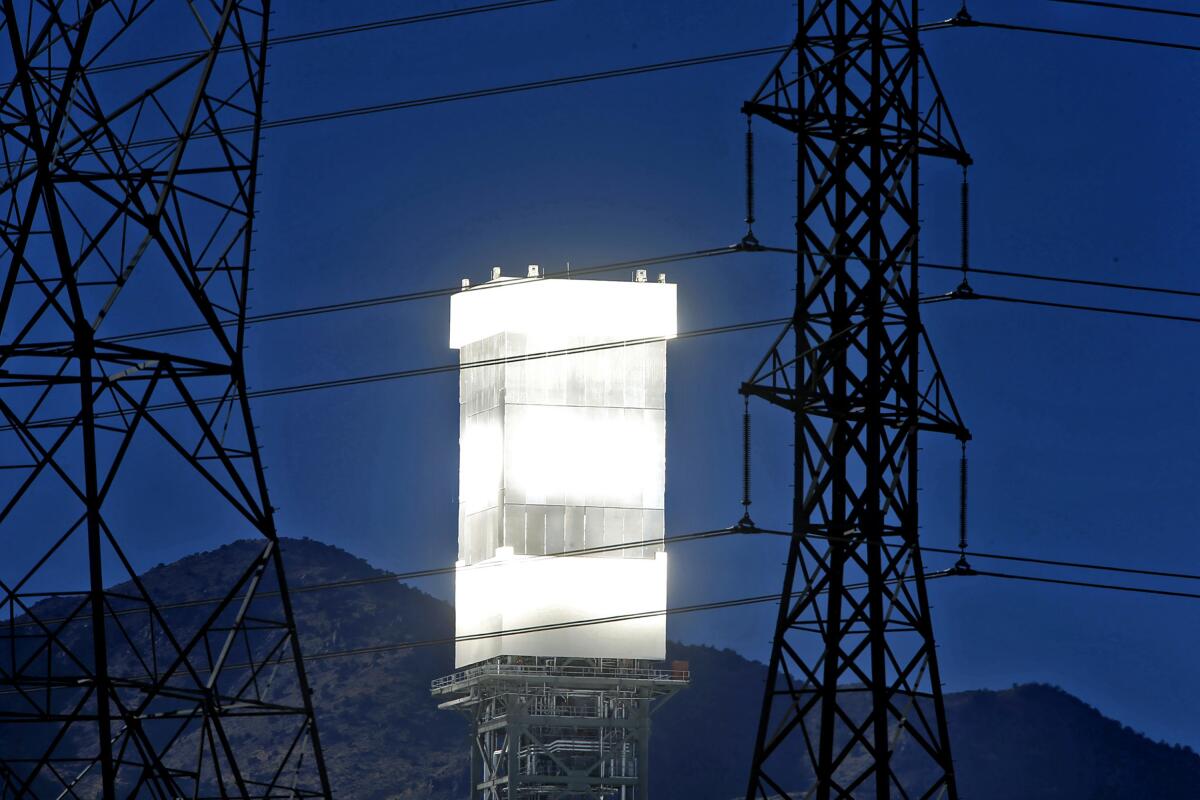Letters to the Editor: Don’t call them solar ‘farms.’ They’re industrial power plants in the desert

- Share via
To the editor: Solar “farms” sounds nice, green, pastoral. But they aren’t farms. (“‘Is this really green?’ The fight over solar farms in the Mojave Desert,” Nov. 3)
Farms are areas of land used to cultivate living crops. Solar “farms” are places where living plants (and animals) are mowed down and die. Solar plants located in California’s deserts are industrial-scale installations and complexes, not farms. Words matter.
A wise and prudent approach would be to maximize solar panel installation on urban roofs and parking areas — on at least 50% of these — before considering putting them on undisturbed desert land. An added benefit of parking lot solar panels is that they provide shade, keeping car interiors cool in the summer.
Kevin Kingma, El Cerrito, Calif.
..
To the editor: I appreciate The Times publishing an article recognizing the aesthetic value of California’s deserts. As a resident of Los Angeles, I have often used these open spaces as an escape from traffic, noise and the bureaucratic frustrations that are so ubiquitous, we forget the larger, natural world where we live.
The article acknowledged our need for energy sources but gave little space to alternatives that cause less environmental impact. Solar panels belong on house rooftops, warehouse facilities, parking lots and degraded landscapes.
But even this solution will leave problems with distribution and energy storage, as well as with the need to dispose of panels at the end of their service lives. In the long run (and perhaps not so long), our culture needs to accept some restraint on its commitment to endless growth.
Craig Deutsche, Los Angeles
..
To the editor: Your article exposes many of the adverse environmental impacts of wind and solar power, in particular the widespread destruction of habitat and wildlife.
Solar panels, many fabricated at facilities in China that use energy derived from coal, reduce biodiversity when installed in our Western deserts. Solar power plants such as Ivanpah incinerate birds flying into the mirror-array “light cone.” Wind turbines are known to also kill birds and bats.
Look to France, which for decades has safely used the only method of meeting the bulk of electrical power demand without massive destruction of habitat and wildlife. Germany, having banned this method (nuclear power), has 10 times the global warming emissions of France.
J. Philip Barnes, San Pedro
More to Read
A cure for the common opinion
Get thought-provoking perspectives with our weekly newsletter.
You may occasionally receive promotional content from the Los Angeles Times.









